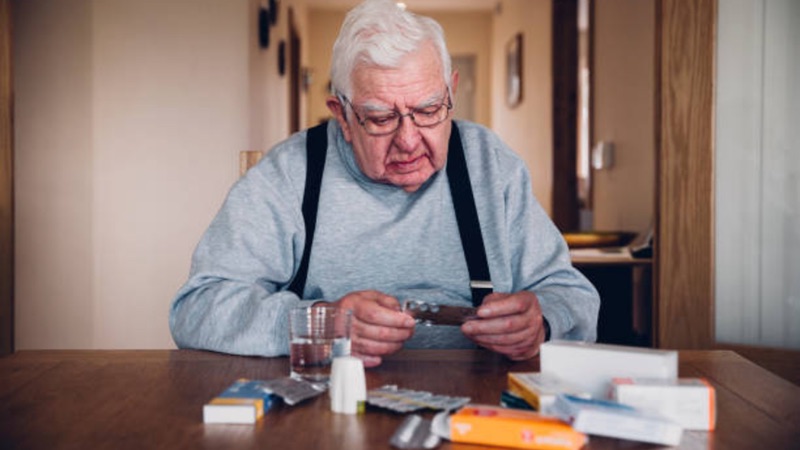Packaging for the healthcare market needs to meet strict criteria. It must provide high levels of protection and security, meet regulatory standards on hygiene, and offer a good patient experience. But with the healthcare sector becoming increasingly competitive, packaging should also play a role in ensuring treatments are commercially sustainable and cost-effective.
Meeting these standards demands a coordinated approach to supply chain logistics, materials selection and packaging design. Getting this balance right can be incredibly impactful, allowing businesses to meet all these goals without compromise.
Pharma manufacturing processes and supply chains face a major challenge. They have to accommodate both generic, bulk-produced products, and newer small batch options.
Adapting to emerging trends
With production increasingly based on demand, and pharma companies reducing inventory for many drug lines, a more agile supply chain is essential to ensure operational efficiency.
Addressing these issues will require closer collaboration with packaging suppliers with a proven ability to create cost-effective, innovative and robust designs.
Offering tailored designs that provide mandatory levels of security at a price that lowers costs is just one part of the process. They also need to be delivered quickly and economically.
There is one packaging option that is experiencing strong growth for its versatility in a wide range of drug applications: blister packs. The use of a high-barrier polymer provides excellent levels of moisture barrier protection, a small form size and high-quality patient experience.
High-barrier blister pack technologies
Blister packs can be manufactured from a range of polymer-based substrates, including polyvinyl chloride (PVC), polyethene terephthalate (PET, A-PET, PET-G), cyclo-olefinic copolymers (COC) and polypropylene (PP), dependent on budget and pack performance requirements.
However, laminates made with polychlorotrifluoroethylene (PCTFE) offer multiple benefits including an enhanced moisture barrier, which helps ensure a drug’s chemical stability and efficacy, during storage and transportation. It is the material of choice for Honeywell's barrier film range.
Significantly, use of these materials allows for delivery of a small blister footprint, enabling significant gains in productivity and capacity versus aluminium-based cold form foil blister packaging while also reducing storage and transportation costs.
The combination of these benefits results in a cost-effective option with short lead times, helping pharmaceutical manufacturers get their drugs to market faster while reducing operational costs.

Kori Anderson, General Manager
Healthcare Packaging
Suppliers in the spotlight
Given the need for increased agility, predominantly a result of the growth of just-in-time production, pharmaceutical manufacturers need to form close relationships with packaging suppliers that offer both customised and standard options of highly consistent materials in the required formats and volumes.
Being able to promptly deliver these, whenever and wherever they’re needed, can help overcome packaging bottlenecks, quickly and effectively, without compromising patient safety.
Getting this right requires an efficient and secure synchronisation of manufacturing processes across the supply chain and a major part of that depends on selecting a suitable packaging supplier.
The key criteria when making the all-important choice is that partners are able to establish a flexible and agile supply chain that addresses the growing demand for smaller batch-size production with shorter lead-times.
Regulatory challenges
Supply chain optimisation aside, blister pack solutions can also help the industry to address broader issues like emerging regulatory challenges. In the US, the Food and Drug Administration (FDA) is looking to implement new packaging guidelines to crack down on widespread opioid misuse by providing medical professionals with better options for tailoring how much they prescribe.
By packaging opioids in three or six-day blister packs, rather than in bottles, it is more likely that doctors will opt for these shorter durations of use.
The proposed legislation would enable the FDA to mandate the availability of certain types of packaging for opioids and other drugs that pose a serious risk of abuse or overdose. This has the potential to increase overheads for companies with a rigid approach to packaging and fulfilment. Those pharma companies with a more agile process already in place will be the ones better positioned to cope with these types of regulatory changes.
Improving patient outcomes
Fundamentally, drug packaging is a means of safely delivering medication to patients. A successful pack design should protect its contents while also allowing a patient to easily open it and access their treatment. This helps ensure that the patient experience is positive as well as effective.

For many applications, a blister pack is the best choice, with a growing ageing global population. According to the United Nations, the number of people aged 60 years or over is expected to more than double by 2050, rising from 962 million in 2017 to a total of 2.1 billion.
These shifting demographics will naturally have an impact on the types of treatments the industry will need to provide. For example, according to a 2017 study conducted at the University of Cambridge, almost half of people in England aged 65 years or over, take at least five different drugs a day.
With increased longevity a global phenomenon, it is placing a growing burden on health providers around the world. And when numerous types of medication are being taken, the potential for medication mismanagement dramatically rises.
The elderly are especially likely to struggle to administer their medications correctly; packaging can exacerbate this problem. Conditions like arthritis, for instance, can make opening bottles problematic. Blister packs, however, not only offer ease of use, but they can also help patients keep track of their prescriptions by providing an immediate visual check on doses taken.
A global market
The advantages provided by blister packs are driving global growth, and the trend is forecast to continue. According to new research by Future Market Insights, the use of high-performance packaging films for the pharmaceuticals market is forecast to grow at 6.6% CAGR until 2027. The ‘Blister Packaging Market: Global Industry Analysis’ report estimates that by this time the sector will have a revenue of US$18 billion.
These trends can be found across a range of markets. North America, which accounts for around 32% of the overall market, is one of the most promising regional markets for blister packaging, with Europe demonstrating similarly solid growth trends. Developing nations including India, China and several Southeast Asian countries, will achieve the greatest growth, albeit from a lower base.
Price pressures
The ability to provide high-quality drugs in a timely and cost-effective way will ultimately help regulate price pressures while also ensuring the maximum benefit to patients. To accomplish this, pharmaceutical companies need to identify packaging suppliers that can help them anticipate market trends and are willing to deliver competitive and innovative solutions that support profitable business growth and investment.
The costs associated with operating a pharma-grade packaging facility can be exorbitant – to maximise the return on this expense requires supply chain partners that have a commitment to search for efficiencies and enhance best practices.
Creating viable pharmaceutical primary packaging is also dependent on materials selection, so it is important to choose a supplier that combines sector experience with detailed product knowledge. As thermoformed blister packs grow in popularity, leading drug companies need to build the right supply chain partnerships today.
N.B. This article is featured in the June 2019 issue of Cleanroom Technology. The latest digital edition is available online.




